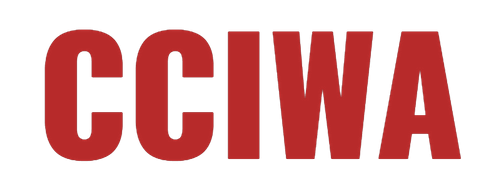A Comprehensive, In-Depth Guide to Suboxone Dosage: A Medical Perspective
Please note: The information presented here is strictly for educational purposes and should not be regarded as a substitute for professional medical advice. Always consult a healthcare provider for appropriate medical advice.
The dynamics of opioid addiction and dependence management have seen a significant shift with the introduction of Suboxone, a medication combining buprenorphine and naloxone. As part of a complete treatment plan for opioid dependency, Suboxone has demonstrated effectiveness in managing withdrawal symptoms and reducing cravings[^1^]. However, the administration and dosage of Suboxone require precise calibration tailored to each individual’s unique needs. It’s crucial to note that dosage adjustments should always be guided by a healthcare professional.
Suboxone Initial Dosage
Initiating treatment with Suboxone requires careful observation and professional oversight. The initial dose is usually one tablet of buprenorphine/naloxone 2 mg/0.5 mg to 4 mg/1 mg[^2^], set to suppress withdrawal symptoms adequately. The timing of this initial dose is crucial. It is typically given when a patient is already in the early stages of withdrawal. This approach is taken to prevent precipitated withdrawal—a rapid and severe onset of withdrawal symptoms.
Patients vary greatly in how their bodies process and react to substances, hence the need for healthcare providers to monitor the onset and severity of withdrawal symptoms closely. This vigilance ensures the medication is working as intended, suppressing withdrawal symptoms, and allows healthcare professionals to adjust the dosage if necessary.
Suboxone Maintenance Dosage
Once the initial dose is administered and withdrawal symptoms are adequately controlled, the patient can transition to the maintenance phase of treatment. Here, healthcare providers may adjust the Suboxone dose to find the ideal balance between suppressing withdrawal symptoms and reducing potential side effects[^2^].
The goal is to reach a maintenance dose, typically a single daily dose of up to 24 mg[^2^]. However, it’s important to understand that this isn’t a universal dosage applicable to all patients. Each individual’s needs and responses to the medication can vary dramatically.
Individual variations can arise due to factors such as metabolic rate, the severity of the addiction, the patient’s overall health, and how well the patient adheres to the treatment plan. Hence, frequent consultations with a healthcare provider are necessary to assess the patient’s condition and adjust the dosage accordingly.
Dosage Adjustments and Discontinuation
Adjustments to the dosage of Suboxone are a common part of the treatment process. Such modifications, either increases or decreases, are typically made in increments or decrements of 2 mg or 4 mg buprenorphine[^2^]. This process allows more precise control over the patient’s withdrawal symptoms and response to the medication.
In certain cases, it may become necessary to discontinue the use of Suboxone. Such scenarios can arise if the patient develops a severe adverse reaction to the medication or if the patient has made significant progress in their recovery journey. In these instances, a healthcare provider typically recommends a gradual tapering of the dose. This approach helps minimize potential withdrawal symptoms that could occur due to the abrupt cessation of the medication[^3^].
It’s essential to remember that this process should always be done under the guidance of a healthcare professional. Attempting to self-adjust the dosage or stop the medication without medical supervision can lead to severe complications, including a relapse into opioid use or the emergence of intense withdrawal symptoms.
Special Considerations
Suboxone treatment should not be considered in isolation. Instead, it should be part of a broader, comprehensive treatment plan that includes counseling and psychosocial support[^1^].
Counseling plays an integral role in helping patients understand their addiction, recognize triggers, and develop coping strategies. Psychosocial support, which can come from support groups or individual therapy, helps patients in their recovery journey by providing emotional support, encouragement, and practical advice on staying drug-free.
Regular follow-up consultations with healthcare providers are also crucial during Suboxone treatment. These consultations provide opportunities to monitor the patient’s progress, adjust the medication dosage if necessary, and address any issues or concerns the patient may have. They also ensure that the medication is being used safely and effectively and that the patient is adhering to the prescribed treatment plan.
Conclusion
In the landscape of opioid addiction treatment, Suboxone plays a pivotal role. It has demonstrated its effectiveness in suppressing withdrawal symptoms and reducing cravings. However, the dosage and administration of Suboxone must be personalized, monitored, and adjusted as necessary by healthcare professionals to ensure safety and efficacy.
This comprehensive guide provides an overview of Suboxone dosage considerations, highlighting the importance of individualized treatment. However, it should not be used as a substitute for professional medical advice. Always consult with a healthcare provider for personal guidance on medication regimens and dosage adjustments.
References
[^1^]: Substance Abuse and Mental Health Services Administration (SAMHSA), 2020. “Buprenorphine”. Retrieved from: https://www.samhsa.gov/medication-assisted-treatment/medications-counseling-related-conditions/buprenorphine
[^2^]: Drugs.com, 2023. “Suboxone Dosage Guide.” Retrieved from: https://www.drugs.com/dosage/suboxone.html
[^3^]: National Institute on Drug Abuse (NIDA), 2020. “Effective Treatments for Opioid Addiction.” Retrieved from: https://www.drugabuse.gov/publications/effective-treatments-opioid-addiction/effective-treatments-opioid-addiction


